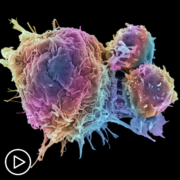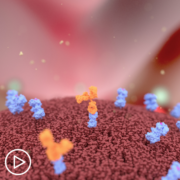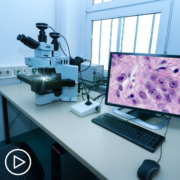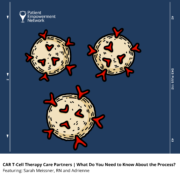When Should CAR-T Therapy Be Considered for Relapsed/Refractory DLBCL Patients?
When Should CAR-T Therapy Be Considered for Relapsed/Refractory DLBCL Patients? from Patient Empowerment Network on Vimeo.
When can relapsed/refractory diffuse large B-cell lymphoma (DLBCL) patients benefit from CAR T-cell therapy? Expert Dr. Nirav Shah from the Medical College of Wisconsin explains study results that compared chemo versus CAR T-cell therapy in relapsed DLBCL patients and the importance of looking at the timing of relapse.
Dr. Nirav Shah is an Associate Professor at the Medical College of Wisconsin. Learn more about Dr. Shah.
[ACT]IVATION TIP:
“…for people thinking about what is the best treatment for CAR T is think about how the disease is behaving, and did you relapse early or did you relapse late?”
See More from [ACT]IVATED DLBCL
Download Resource Guide en español
Related Resources:
Transcript:
Lisa Hatfield:
When do you say that CAR-T therapy should be used for relapsed/refractory patients? Is it after the first line of therapy has failed, or when do you tell your patients to consider that?
Dr. Nirav N. Shah:
Yeah, so there was a large clinical trial that compared outcomes for those patients who had early relapse of diffuse large B-cell lymphoma. So within 12 months of finishing their R-CHOP chemotherapy, and they compared that to what was our historical standard, was to get more chemotherapy and then consider a stem cell transplant. And CAR T did better, and CAR T had better outcomes. And then recently, they just actually demonstrated that those patients that got CAR T early as a second-line therapy actually had better survival. For patients with early relapse in diffuse large B-cell lymphoma, the standard of care is to go right to CAR T-cell therapy as long as you’re a candidate, which means you have to be healthy enough, have the social support and the resources to be able to go through that therapy, which does require you to be within 45 minutes of a CAR-T center for about a month.
And again, we talked about, again, there’s issues with accessibility, which limits it sometimes, the availability to CAR T to all of our patients. Now, for those patients who relapse later, and we see that, patients who relapse a year-and-a-half, two years or even three or four years after their initial treatment, for those patients, the standard of care is to give a second-line chemotherapy, and then based on how well you respond to that, you would consider either doing a stem cell transplant if you had a very nice response to that second-line therapy, or if you were refractory to that second-line therapy, then getting CAR T as sort of a third-line therapy.
So again, there are lots of caveats here. The main distinction I think about is, when did you relapse? Did you relapse earlier or late? And based on that, choosing the treatment that’s most appropriate for that situation. So my activation tip for people thinking about what is the best treatment for CAR T is think about how the disease is behaving, and did you relapse early or did you relapse late?
Share Your Feedback:
Create your own user feedback survey













